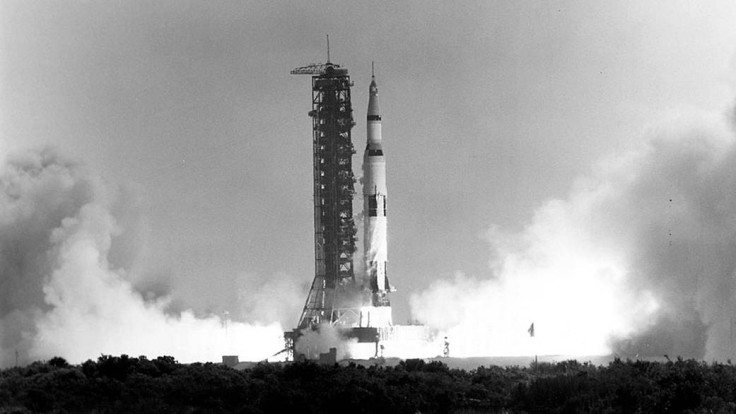Three astronauts began their mission to the moon on this day (July 16), 53 years ago.

The Launch of Apollo 11
The world watched as the crew got ready to create history by taking the first human trip to the moon's surface in 1969.
NASA's Saturn V rocket fired up and blasted out from launch pad 39A at 9:32 a.m. ET. Spectators gathered at Florida's Kennedy Space Center and the surrounding area to watch the Apollo 11 launch in perfect weather as the 363-foot tall rocket blasted off from Earth, according to NASA and Space.com.
In addition to Commander Neil Armstrong, Command Module Pilot Michael Collins, and Lunar Module Pilot Buzz Aldrin, the spacecraft also carried cameras, the Early Apollo Scientific Experiment package, supplies and food for the crew, additional scientific instruments and equipment, and tools for collecting lunar surface samples.
Read More : #SpaceSnap The Alluring Crab Nebula Captured by the Hubble and Herschel Space Telescopes
The First Men to the Moon
Three astronauts were sent toward the moon during the memorable Apollo 11 launch. Millions of people watched them on television as two of them made history by becoming the first humans to walk foot on the moon.
Space.com noted that two televised broadcasts were made by the crew from within the ship while it was in flight. A third transmission that shows the lunar surface and the intended approach path is also made when they get closer to the moon.
On July 20, Armstrong and Aldrin departed from the Command Service Module (CSM), known as the "Columbia," and boarded the lunar module (LM) known as the "Eagle." They then moved toward the lunar surface.
At 4:17 p.m. ET, the lunar module landed on the Sea of Tranquility, a huge basaltic region of the moon. And finally, at 11:56 p.m. ET, Armstrong descended a ladder while being broadcast live via a camera mounted within the Eagle, and said, "That's one small step for man, one giant leap for mankind."
NASA noted that Armstrong's voice and image were streamed live to an estimated 650 million people.
After 20 minutes, Aldrin arrived, and Armstrong recorded his descent on camera. Since Armstrong was tasked with documenting the landing, Aldrin was the focus of the majority of photos from the Apollo 11 mission.
Sending the First Humans to the Moon Is Not the Only Objective of the Mission
According to NASA, the crew's scientific research was one of the additional flight objectives, along with the deployment of a television camera to transmit information to Earth, a seismic experiment package, a laser ranging retroreflector, and a solar wind composition experiment.
The space agency added that the two astronauts were to collect lunar surface material samples for return to Earth throughout the exploration. They also had to take a lot of pictures of each other, the LM spacecraft, the deployed scientific equipment, and the lunar surface.









